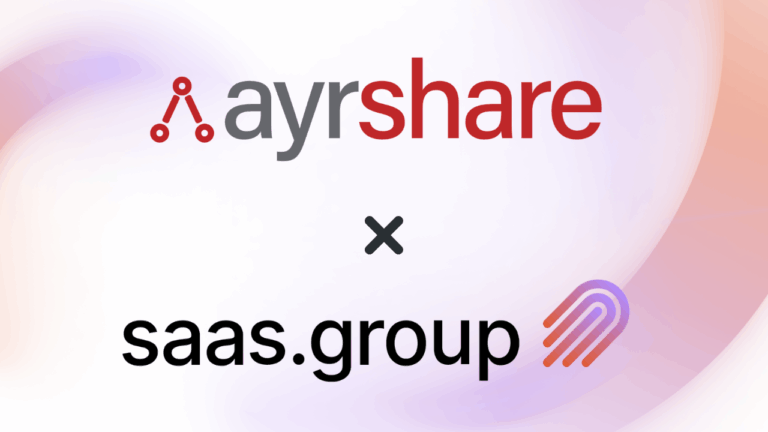Valid question. And there are many options out there. But before getting close to those places, there are a couple more questions to answer first. Like, why to sell? And how?
Let’s start with the why. You should always start with the why. There are no wrong answers here, too, but there’s only 1 right one. And it’s right for you and your particular situation. It’s also the first question we, at saas.group, ask founders who approach us for a possible acquisition.
And the reason it’s so important is because it will affect the way we structure the deal to make sure it makes sense for you.
Structuring the Deal: Aligning with Your Goals
Are you selling to get some chips off the table? You’ve gotten your company this far and now since the growth plateaued, you don’t know what to do, don’t have the resources, or frankly just aren’t sure you’re the right person to take it further. You love to code, design, or talk to your customers. Admin work and hiring are not your cup of tea. Understandable and oh, so very common. In this case, staying with us after the sale is a great option that we can offer you. We get an incredible advantage of having a founder on board who knows all the ins and outs of the product and company. You get more time with something you love until you figure out the next step.
Burned out and can’t wait to leave? Sadly, also something we see often. And hey, we pride ourselves on offering some of the shortest due diligence and sales periods out there. We won’t strap you to a chair and ask you to stay for “just a couple of years longer”. Nobody will feel good about that. That said, being left without a visionary isn’t the best-case scenario for us and may affect the valuation slightly, but you pick your battles.
The earlier a potential acquirer figures out your desires and intentions for the future, the easier it is to craft an offer that actually makes sense. In another case, there can be a complete mismatch that can result in frustrations and lost trust, time, and profits. So when you visualize your dream exit, remember it’s not only about dreaming, it’s also about being realistic about your wants and likes and communicating them transparently with your buyer.
Navigating the Exit Process
The next question is how. How involved do you want to be in the process? Are you ready to dig into research and buyer due diligence and then prepare all the documents for the deal? Or would you rather have someone who’s been through it a few times help you, take over the representation of the business, and eventually make the deal happen?
Acquisitions take time, patience, and meticulous planning. For smaller businesses, the disruption can be so huge, they lose their grasp on the operations, and in case the deal falls through, have to scramble to survive.
In figuring out the how, you should understand the exit structure that makes sense for you (and your co-founders), the taxes and what you’ll be left with after all the deductions, the earnout period, and what you’re getting at the end (cash, stocks, etc.), how your product is going to be affected, and where will your team will end up after the closing.
It seems like a lot to do. And in all honesty, it is. So sometimes it’s better to go through a broker. It’s always better to go through a lawyer. And an M&A lawyer at that. None of the “he’s been helping with my cousin’s divorce” kind of situation. They may have been able to get the alimony right, but keeping an eye on a child and figuring out the company’s future are 2 very different fishes to fry.
Choosing the Right Buyer for your SaaS company
Once you’ve made your piece with the reason you’re selling the company in the first place and how you want to do it, it’s time for the “where”.
We’ll go backwards from here. If in the previous question, your answer was, I want to spend the least amount of time and get the most money, try listing on marketplaces. There are several great, well-respected ones where you get a great volume of potential acquirers eager to learn more about your company. The competition is huge, so you can expect lots of bidding, calls, and a great deal of feedback. That said, also expect a lot of tire-kickers, funds with no funds, and having to dig your way through to find a real fit.
A few options out there:
Flippa.com
If you’d like to have a more tailored approach where the fit is most likely to happen but again not sure if you got the time to do your own research, go with a broker. Yes, the commission is high but you get what you’re paying for: you save time, and get a chance to keep on running the company while somebody else is trying to sell it for the biggest buck possible.
Something to keep in mind is the possible disadvantage of not being the one to represent your business, truly show its value, and build a relationship with the buyer first-hand.
If that’s too big of a concern and you actually have the time to research, do buyer due diligence, and have the introduction calls, go alone. It may take much longer but will give you an advantage of really nailing down the best options for you, building relationships, and living that dream exit dream.
Ensuring a Smooth Transition
And here we come full circle to the why. It is your North Star metric when talking to potential acquirers. Once you have a list of buyers that would make sense for the business, be very transparent with what you want (and what is a big no-no). Buyers appreciate honesty and would be thankful for someone saying 1x on EBITDA and firing the team is not what they’re looking for on the first call, rather than 4 weeks of polite maybes only to ditch them anyway.
Look around, and see what is out there on the website, companies on the portfolio, and LinkedIn content of the acquirer (and those they acquired). Have a few calls with the founders who went through the process with that company. Is their testimonial a true one or in all honesty, they wouldn’t want to go through a process like that ever again?
Check out your biggest clients. What is the chance it would make sense for them to acquire you? We’ve seen a few of those deals going exceptionally well resulting not only in big returns but also in the best possible product development opportunities and team growth.
Make your job a little easier. If you aren’t sure how to approach somebody you’ve worked with or an individual company you think could be a good fit, check out serial acquirers.
They’re always on the lookout for the best deals out there and are happy to take a look at your offer. Obviously, going to each and every one doesn’t make sense in this case either. Do your homework and contact those with similar companies in their portfolio, the knowledge and growth opportunities that would make sense for your exit plan, and those that just feel right.
Here are some examples:
Noosa Labs – for bootstrapped SaaS with $150-$800k in ARR
Enduring Ventures – for “blue collar” companies with $2M ARR 50% gross margins and 20% or greater operating margins
Embrace – mission-critical vertical software, with revenues ranging from $2 – $30M
And, of course, saas.group – for $1-$10M ARR profitable B2B SaaS companies with bootstrapper mindset
There you have it. Before jumping to the most obvious (and the easiest) question of all, figure out the reason to sell and how you see the process go from searching for a potential buyer to after you get all the money in your bank account.
Here is the advice from Tim Schumacher:
“I think I would recommend to really do your due diligence on the buyer.
Really find out who those people are. Are you comfortable with them? Do reference calls with other founders. It’s one thing we always offer at saas.group. You can call any of the 20 founders from whom we bought the business. And you should!
This is a trust thing. And at the end of the day, you’re selling what you’ve put all your life into for the past couple of years.
You want your team to have a good home. You want your customers to have a good home. You want to be there in five years and have this company on your LinkedIn profile. And when you click on it, you don’t want to go to a 404 page. You want to have this business thriving.
It makes you proud as a founder if your company continues on. And that’s how we’re acquiring companies at saas.group. We want the founders to continue to be proud of their businesses 5-10 years later. We preserve the name, we preserve what made the company strong in the first place.
We’re also operators. We’re not treating the businesses as spreadsheets. We’re really treating the businesses as sustainable, great businesses, and growing them further. “
If our values speak to you and resonate with how you do business, get in touch. Discuss your options with our M&A team: Dirk (dirk@saas.group) or Pavel (pavel@saas.group). Learn more about how we grow acquired brands on our blog and podcast pages.
Table of Contents
Weekly newsletter
No spam. Just the latest news and articles from the world of SaaS and Acquisitions.




